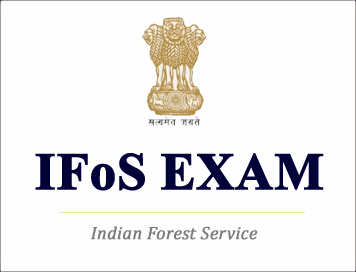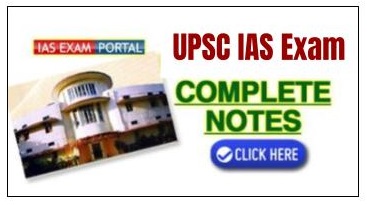
संघ लोक सेवा आयोग सिविल सेवा - मुख्य परीक्षा
(Download) UPSC IAS Mains Exam Paper - 2017 : सिविल इन्जीनियरी (Paper - 2)
सिविल इन्जीनियरी
(प्रश्न पत्र - II)
निर्धारित समय : तीन घंटे
अधिकतम अंक : 250
प्रश्न-पत्र सम्बन्धी विशेष अनुदेश
कृपया प्रश्नों के उत्तर देने से पूर्व निम्नलिखित प्रत्येक अनुदेश को ध्यानपूर्वक पढ़े :
इसमें आठ (8) प्रश्न हैं जो दो खण्डों में विभाजित हैं तथा हिन्दी और अंग्रेज़ी दोनों में छपे हैं ।
परीक्षार्थी को कुल पाँच प्रश्नों के उत्तर देने हैं।
प्रश्न संख्या 1 और 5 अनिवार्य हैं तथा बाकी में प्रत्येक खण्ड से कम-से-कम एक प्रश्न चुनकर किन्हीं तीन प्रश्नों के उत्तर दीजिए । प्रत्येक प्रश्न/भाग के अंक उसके सामने दिए गए हैं ।
प्रश्नों के उत्तर उसी प्राधिकृत माध्यम में लिखे जाने चाहिए जिसका उल्लेख आपके प्रवेश-पत्र में किया गया है, और इस माध्यम का स्पष्ट उल्लेख प्रश्न-सह-उत्तर (क्यू.सी.ए.) पुस्तिका के मुख-पृष्ठ पर निर्दिष्ट स्थान पर किया जाना चाहिए । प्राधिकृत माध्यम के अतिरिक्त अन्य किसी माध्यम में लिखे गए उत्तर पर कोई अंक नहीं मिलेंगे।
प्रश्नों में शब्द सीमा, जहाँ विनिर्दिष्ट है, का अनुसरण किया जाना चाहिए ।
जहाँ आवश्यक हो, आरेख / चित्र उत्तर के लिए दिए गए स्थान में ही दर्शाइए ।
प्रश्नों के उत्तरों की गणना क्रमानुसार की जाएगी । यदि काटा नहीं हो, तो प्रश्न के उत्तर की गणना की जाएगी चाहे वह उत्तर अंशतः दिया गया हो । प्रश्न-सह-उत्तर पुस्तिका में खाली छोड़ा हुआ पृष्ठ या उसके अंश को स्पष्ट रूप से काटा जाना चाहिए ।
खण्ड A
1. (a) निम्नांकित सारणी एक निर्माण-कार्य परियोजना में क्रियाओं एवं अन्य संबद्ध जानकारी को दर्शाती है :
| क्रिया |
अवधि |
| 1-2 |
20 |
| 1-3 |
25 |
| 2-3 |
10 |
| 2-4 |
12 |
| 3-4 |
6 |
| 4-5 |
10 |
(i) परियोजना के नेटवर्क (जाल) का चित्र बनाइए।
(ii) क्रान्तिक पथ को ज्ञात कीजिए।
(ii) प्रत्येक क्रिया के लिए फ्री (मुक्त) फ्लोट, टोटल (सकल) फ्लोट एवं इन्डिपेन्डेन्ट (स्वतंत्र) फ्लोट को ज्ञात कीजिए।
(b) सीमेंट मसाला से आप क्या समझते हैं? सीमेंट मसाला समानुपातन के सिद्धान्त को स्पष्ट कीजिए तथा सीमेंट मसाला के ठोसपन एवं ताकत के बीच के संबंध को भी स्पष्ट कीजिए।
(i) सर्वेक्षण की सुदूर संवेदन विधि को वर्णित कीजिए। आइ० आर० एस० डेटा के विभिन्न उपयोगों की सूची नाइए।
(ii) त्रिकोणीय सर्वेक्षण के सिद्धान्त का वर्णन कीजिए। त्रिकोणीय सर्वेक्षण की आधार-रेखा को निर्धारित करने वाले विभिन्न कारकों का वर्णन कीजिए।
(d) एक आदर्श रेल पटरी परिच्छेद के लिए क्या आवश्यकताएँ होती हैं? एक स्वच्छ रेखाचित्र की सहायता से 60 kg प्रकार के मानक सपाट-पाद बड़ी लाइन रेल पटरी परिच्छेद को स्पष्ट कीजिए। प्रत्येक भाग की सन्निकट विमाओं को चिह्नित कीजिए।
(i) महामार्गों में जल-निकासी के महत्त्व की चर्चा कीजिए। तटीय क्षेत्र में पड़ने वाले राष्ट्रीय महामार्ग के लिए सतहीं एवं अधस्तलीय जल-निकासी व्यवस्थाओं को वर्णित कीजिए।
(ii) रोटरी (चक्रिल) इन्टरसेक्शन के डिज़ाइन को प्रभावित करने वाले कारकों की सूची बनाइए।
2. (a) निम्नलिखित के बीच विभेदन कीजिए :
(i) सी० पी० एम० एवं पर्ट
(ii) फ्लोट एवं स्लैक
(iii) प्रत्यक्ष लागत एवं अप्रत्यक्ष लागत
(iv) टोटल (सकल) फ्लोट एवं इन्डिपेन्डेन्ट (स्वतंत्र) फ्लोट
(b) प्लास्टर करने और टीप करने के उद्देश्यों को स्पष्ट कीजिए। टीप करने के विभिन्न प्रकारों पर स्वच्छ चित्रों की सहायता से चर्चा कीजिए।
(c) उन सभी कारकों की सूची बनाइए, जो निर्माण उपस्कर के चुनाव को प्रभावित करते हैं। आप किसी उपस्कर की लाभप्रद आयु का निर्धारण कैसे करेंगे? एक उपयुक्त उदाहरण की सहायता से स्पष्ट कीजिए।
3. (a) सिविल निर्माण के संदर्भ में शब्द 'विनिर्देश' को स्पष्ट कीजिए। विनिर्देश के विभिन्न उद्देश्यों को बताइए। प्रबलित सीमेंट कंक्रीट के विस्तृत विनिर्देश को वर्णित कीजिए। (b) समोच्च रेखाओं के अभिलक्षणों का वर्णन कीजिए। एक जलाशय-स्थल एवं प्रस्तावित बाँध के फलक पर समोच्च रेखाओं में आने वाले क्षेत्र निम्नांकित हैं :
| समोच्च रेखा (m में) |
क्षेत्रफल (m2 में) |
| 441 |
270 |
| 444 |
10440 |
| 447 |
75600 |
| 450 |
144000 |
| 453 |
270000 |
| 456 |
414500 |
| 459 |
460800 |
| 462 |
586800 |
| 465 |
639900 |
जलाशय के निम्न सतह को 441 m और जल सतह को 465 rn मानकर, जलाशय में जल के आयतन को घन मीटरों में निर्धारित कीजिए।
(c) (i) कंक्रीट स्लीपरों के फायदों एवं नुकसानों की सूची बनाइए। एक आदर्श स्लीपर की क्या आवश्यकताएँ हैं?
(ii) रेल पटरियों में सिग्नलों की क्या आवश्यकता है? सेमाफोर सिग्नल का एक स्वच्छ चित्र बनाइए एवं इसके
(d) (i) महामार्ग के ज्यामितीय डिज़ाइन के क्या उद्देश्य हैं? एक महामार्ग का डिज़ाइन करने के समय आवश्यक रूप से विचार किए जाने वाले विभिन्न तत्त्व क्या हैं?
(ii) किसी निर्मित क्षेत्र में महामार्ग का संरेखण करने में 325 m त्रिज्या के एक क्षैतिज वृत्ताकार वक्र बनाने की आवश्यकता थी। निम्नलिखित ज्यामितीय विशिष्टताओं (फीचर्स) का अभिकल्पन कीजिए : ।
(1) अतिउत्थापन (सुपरएलिवेशन)
(2) कुट्टिम का अतिरिक्त चौड़ीकरण
(3) ट्रांजिशन वक्र की लम्बाई उपलब्ध आँकड़े हैं :
अभिकल्पन गति = 65 kmph सबसे बड़े ट्रक के व्हीलबेस की लम्बाई = 6 m कुट्टिम की चौड़ाई = 10-5 m
4. (a) (i) कंक्रीट के समानुपातन की विभिन्न विधियों का संक्षेप में वर्णन कीजिए।
(ii) सादा सीमेंट कंक्रीट और प्रबलित सीमेंट कंक्रीट के बीच विभेदन कीजिए। प्रबलन किस कारण आवश्यक होता है? चर्चा कीजिए।
(b) दो बिन्दुओं A एवं B के बीच में एक सीधी सुरंग बनानी है, जिसके नेट कोऑर्डिनेट निम्न सारणी में दिए गए हैं :
| POINT |
Independent Coordinates |
| N |
E |
| A |
0 |
0 |
| B |
3014 |
256 |
| C |
1764 |
1398 |
AB के मध्यबिन्दु D पर एक शैफ्ट को सिंक करना वांछनीय है, परंतु AB के बीच सीधा माप करना असंभव है। अतः D को फिक्स करने के लिए एक तीसरे ज्ञात बिन्दु ८ की जरूरत है। ज्ञात कीजिए
(i) D के नेट कोऑर्डिनेट;
(ii) CD की लम्बाई एवं दिस्थिति (बियरिंग);
(iii) कोण ACD, दत्त कि AC का पूर्ण सर्कल बियरिंग 38924" है।
(c) एक ट्रेन को खींचने के पहले एक इंजन को जिन विभिन्न प्रतिरोधों को पार करना पड़ता है, उन प्रतिरोधों की चर्चा कीजिए। एक चौड़ी लाइन इंजन, जिसके चार जोड़ी चालन ड्राइविंग) चक्के हैं, एक सीधे समतल ट्रैक पर 86 kmph पर दौड़ता है। अधिकतम ऐक्सल लोड 28:5 टन है।
(i) उस इंजन द्वारा खींचे जा सकने वाले अधिकतम अनुमेय ट्रेन लोड को ज्ञात कीजिए।
(ii) अगर ट्रेन 200 में 1 के ग्रेडिएंट पर चढ़ती है, तो रफ्तार में घटौती का भी अभिकलन कीजिए।
(iii) अगर ट्रेन 200 में 1 के ग्रेडिएंट पर, 3° वक्र के साथ, चढ़ती है, तो ट्रेन की घटी हुई रफ्तार क्या होगी?
(d) यांत्रिकतः स्थिरीकृत मृदा महामार्ग के कार्य को निष्पादित करने के समय किन बिन्दुओं को ध्यान में रखना होता है? एक राष्ट्रीय महामार्ग एक रोलिंग टेरेन से गुजरती है, जिसमें 600 m त्रिज्या वाला एक क्षैतिज वक्र है। ट्रांजिशन वक्र की लम्बाई का अभिकल्पन कीजिए एवं निम्नांकित आँकड़ों से शिफ्ट का अभिकलन कीजिए :
खण्ड-B
5. (a) (i) अपरिरुद्ध एवं परिरुद्ध जलवाही स्तर में पानी छोड़ने की प्रक्रिया का वर्णन कीजिए। एक जलवाही स्तर के प्रवाह समीकरण की व्युत्पत्ति में पूर्वधारणाओं की सूची बनाइए।
(ii) एक कुआँ, जिसकी त्रिज्या 0:3 m है, की खुदाई एक अपरिरुद्ध जलवाही स्तर में की जाती है। बेड़-सतह से प्रारम्भिक जल-स्तर 30 m ऊपर है। जल की मात्रा को अनुमानित कीजिए जिसे पम्प किया जा सकता हैं, अगर अधिकतम ड्रॉडाउन को 8 m तक सीमित किया गया हो।
मान लीजिए :
जलीय चालकता = 25 m/दिन
प्रभाव की त्रिज्या = 300 m
(b) (i) स्थायी म्लानि बिन्दु एवं क्षेत्र क्षमता को परिभाषित कीजिए। सिंचाई की आवृत्ति को निर्धारित करने में यह किस प्रकार उपयोगी है?
(ii) निम्नांकित आँकड़ों के आधार पर सिंचाई की आवृत्ति को निर्धारित कीजिए :
खपत उपयोग = 28 mrn/दिन जड़ क्षेत्र की गहराई = 80 mm सिंचाई दक्षता = 65%
उपलब्ध मृदा नमी = 50% प्रयुक्त जल की गहराई को भी ज्ञात कीजिए।
(c) 'अभिकल्पन काल' एवं 'जनसंख्या पूर्वानुमान' से आप क्या समझते हैं? 'इन्क्रीमेन्टल इन्क्रीज़' विधि, जो किसी शहर की भविष्य की आबादी बताती है, को वर्णित कीजिए एवं इसके फायदों का उल्लेख कीजिए।
(d) 80000 की जनसंख्या को प्रति व्यक्ति प्रति दिन 150 L की माँग के अनुसार जल की आपूर्ति की जानी है। उपचार में क्लोरीन की खपत 5 kg/दिन होती है। 10 मिनट के सम्पर्क के बाद अवशिष्ट क्लोरीन 0-20 mg/L होती है। पानी की क्लोरीन माँग का परिकलन कीजिए।
(e) (i) ठोस अपशिष्ट के अनुचित निस्तारण के सामान्य रूप से मानव स्वास्थ्य और पर्यावरण पर परिणामों को स्पष्ट कीजिए।
(ii) नगरीय ठोस अपशिष्ट (एम० एस० डब्ल्यू०) के संघटन पर चर्चा कीजिए।
6. (a) (i) जलालेख की परिभाषा दीजिए। स्वच्छ रेखाचित्र की सहायता से, जलालेख से आधारभूत प्रवाह पृथक्करण की किन्हीं दो विधियों को स्पष्ट कीजिए।
(ii) क्रमिक विधि के द्वारा समझाइए कि जलाशय की धारिता को, द्रव्यमान अंतर्वाह वक्र के इस्तेमाल से, किस प्रकार निश्चित किया जाता है।
(iii) एक-उद्देशीय जलाशय और बहु-उद्देशीय जलाशय के बीच विभेदन कीजिए। बहु-उद्देशीय जलाशय में जल के आबंटन की दो महत्त्वपूर्ण विधियाँ स्पष्ट कीजिए।
(b) (i) किसी नहर के अभिकल्पन विसर्जन को निम्नांकित आँकड़ों की मदद से ज्ञात कीजिए :
| Crop |
Base Period (Days) |
Area (Hectares) |
Duty (Hectares / Cumec) |
| Sugarcane |
320 |
850 |
580 |
| Overlap sugarcane in hot weather |
90 |
120 |
580 |
| Wheat (Rabi) |
120 |
600 |
1600 |
| Bajri (Monsoon) |
120 |
500 |
2000 |
| Vegetables (Hot Weather) |
120 |
360 |
600 |
नहर का टाइम फैक्टर = 15/20
कैपेसिटी फैक्टर = 0.75
(ii) गुरुत्व बाँध एवं मृदा बाँध की विफलता की विधाओं की व्याख्या कीजिए।
(iii) जलाशय अवसादन पर एक टिप्पणी लिखिए।
(c) (i) उत्प्लव मार्ग के प्रकार्य को स्पष्ट कीजिए। ओगी उत्प्लव मार्ग के क्या फायदे हैं? एक स्वच्छ रेखाचित्र की सहायता से स्पष्ट कीजिए।
(ii) निम्नांकित आँकड़ों वाले एक ओगी उत्प्लव मार्ग पर विसर्जन को ज्ञात कीजिए :
C = 2.4
हेड = 2 m
लम्बाई = 100 m
शिखर, सतह से 8 m की ऊँचाई पर है।
(iii) शमन बेसिन एवं नदी नियंत्रण निर्माण पर टिप्पणी लिखिए।
7. (a) एक शहर में सतह, जिस पर वर्षा होती है, के वर्गीकरण को नीचे दिखाया गया है :
| % of total surface area |
Type of surface |
Coffiecient of runoff |
| 20% |
Rooftop |
0.90 |
| 20% |
Pavement |
0.85 |
| 10% |
Paved Yard |
0.80 |
| 15% |
Macedam Road |
0.40 |
| 35% |
Lawns |
0.10 |
क्षेत्र के रन-ऑफ गुणांक का निर्धारण कीजिए। अगर शहर का कुल क्षेत्रफल 40 ha है एवं अधिकतम वर्षा तीव्रता 6 cm/hr है, तो शहर का रन-ऑफ क्या होगा?
(b) (i) अपशिष्ट जल के उपचार में BOP / COD अनुपात के महत्व की व्याख्या कीजिए।
(ii) एक सीवेज नमूने के 2-दिन 37 °C BOD को परिकलन कीजिए, जिसका 5-दिन 20 °C BOD 150 mg/L हो। मानिए कि 20 °C पर kp का मान 0-1 है।
(c) (i) स्लज पाचन प्रक्रम की विभिन्न अवस्थाओं का वर्णन कीजिए। उन विभिन्न कारकों का भी वर्णन कीजिए जो स्लज पाचन को प्रभावित करते हैं एवं उनका निदान भी बताइए।
(ii) एक ऑक्सीकरण पॉन्ड का अभिकल्पन कीजिए जिसे एक ऊष्म जलवायु वाले आवासीय कॉलोनी, जिसकी आबादी 6000 हैं, में बनने वाले 150 L/दिन/व्यक्ति सीवेज को ट्रीट करना है। सीवेज का 5-दिन BOD 250 mg/L है।
8. (a) (i) बाढ़ मार्ग-निर्धारण को परिभाषित कीजिए। हाइड्रोलिक मार्ग-निर्धारण एवं हाइड्रोलॉजिक मार्ग-निर्धारण में अन्तर को लिखिए।
(ii) संचय बहिर्वाह मार्ग-निर्धारण एवं मस्किंगम मार्ग-निर्धारण में प्रयुक्त आधारिक संकल्पनाओं की संक्षेप में व्याख्या कीजिए।
(iii) शुद्धगतिक बाढ़ मार्ग-निर्धारण पर एक संक्षिप्त टिप्पणी लिखिए।
(b) (i) लेसी की रिजीम थियोरी की व्याख्या कीजिए। रिजीम वाहिका, आरंभिक रिजीम और अंतिम रिजीम की परिभाषा दीजिए।
(ii) लेसी की थियोरी को व्यवहार में लाते हुए एक वाहिका के अभिकल्पन के प्रत्येक कदम को स्पष्ट कीजिए।
(iii) लेसी की थियोरी एवं केनेडी की थियोरी की तुलना कीजिए।
(c) (i) खनन कार्यकलाप पर्यावरण को कैसे प्रभावित करते हैं? खनन के पर्यावरणीय प्रभाव पर विस्तार से चर्चा कीजिए।
(ii) हवा को प्रदूषित करने वाले विभिन्न प्रदूषक क्या हैं? उनके स्रोतों एवं सामान्य तौर पर मनुष्य के स्वास्थ्य तथा पर्यावरण पर पड़ने वाले प्रभावों पर चर्चा कीजिए।

NEW! UPSC, IAS परीक्षा संपूर्ण अध्ययन सामग्री (प्रारंभिक, मुख्य, साक्षात्कार COMBO) - Hindi Medium

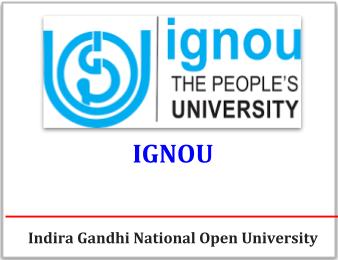


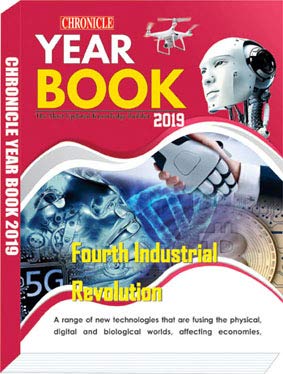
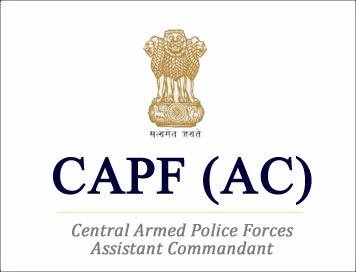

.jpg)
.jpg)
.jpg)
.jpg)
.jpg)
.jpg)
.jpg)
.jpg)
.jpg)
.jpg)
.jpg)
.jpg)
.jpg)

.jpg)
.jpg)
.jpg)
.jpg)
.jpg)
